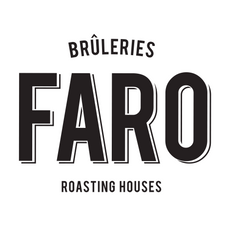Latin America: Brazil
Overall taste profile
The immensity of Brazil allows this country to produce just as immense an array of coffee varieties and flavors, which makes Brazil the largest exporter of coffee in the world (60% of the world production, Robusta & Arabica). Brazilian coffee was first recognized (1920) for its body (funny, isn’t it?), its roundness and its soft and nutty overtones. Today, modern technologies have allowed Brazilian varieties to take center stage thanks to their distinctive hints of caramel and dark chocolate, and their sustained body.
Coffee producing regions
MINAS GERAIS is home to 50% of the Brazilian production, which represents some 2,488,000 acres of farmland. The best coffee beans of Brazil are indeed grown in this state. This is also where the largest coffee trees can be found. The region boasts a mild and stable climate in addition to offering periods of heavy rainfall that allow several varieties to thrive.
SAO PAULO is one of Brazil’s most traditional coffee growing areas; it developed rapidly thanks to Sao Paulo’s oceanfront port from where most of the country’s coffee is exported. Arabica plantations cover more than 425,000 acres. The climate is temperate and the geology is made of low lands where large agricultural plateaus are abundant (800-1200m).
ESPIRITO SANTO. This part of Brazil is the second largest state after Minas Gerais in terms of Arabica production. Indeed, close to a third (28%) of all Brazilian Arabicas exported is grown in Espirito Santo. 1,140,000 acres of farmland are used for producing Arabicas. The territory’s altitude is relatively low, in the range of 900-1200m. The region underwent considerable economic development towards the end of the nineteenth century thanks to its state capital, Vittoria. Eighty percent of the country’s robustas travel through this port.
Coffee varieties
Bourbon, Typica, Catuai, Caturra, Maragogype, Catimor.
Processes
Natural and pulped natural are the most widely used processes in Brazil. The “natural” process dominates the “natural pulped” process due to its long-lasting tradition (150 years of growing coffee have resulted in prioritising this technique). If this processing
technique is still used today despite the wide array of farm machinery available to coffee farmers, it is because it has proven to be very effective in low farmlands. Coffee picking is still widely used throughout Brazil whereby each berry is picked by hand one by one!
At Brûleries FARO, coffee lovers can find various kinds of Brazilian coffee beans, roasted to three different shades: light, medium and dark roast. They are used to give texture to some of our favourite blends and provide you with a dense and smooth crema, or to highlight the special flavours yielded by our small batch roasting methods.




